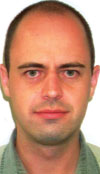
Many installers, consultants and users ignore the networking component of security.
When most customers are in the process of deciding on an IP security solution, including surveillance and access control, the conversations with their integrators, installers and consultants revolve around what cameras should be used, where they should be located and what exactly they should be doing. There is nothing wrong with this scenario, in fact it is a crucial part of the installation process.
The discussion that is often glossed over, or simply never held, is about the network that will support the new installation. All too often the customer assumes a network is a network and believes the installer will do whatever is necessary to implement a network that will transmit the required images effectively.
Regular readers of Hi-Tech Security Solutions will recall the comment from Cisco in the October 2011 issue that for every US$1 spent on security equipment in large surveillance installations, US$5 is spent on networking equipment. This should indicate the importance of the network in effective surveillance. In smaller installations the ratio may be less, but an efficient network is no less important.
ATEC’s Riaan Janse van Rensburg, previously with Letlhaka Technologies, which was acquired by ATEC earlier this year, says that IP surveillance solutions run over Ethernet networks, and few installers have taken the time to get to know this technology well enough to optimise the networks for video and other security data.

Janse van Rensburg says ATEC is often brought onto a site to service security installations, but cannot fulfil the networking part of the SLA (service-level agreement) because the network is poorly designed and installed. “Some installers think that as long as you give a camera [or access control device] an IP address and you can ping it, everything is fine,” he notes. “But when it comes to the crunch, networks are bottlenecked, packets lost and the video, in particular, does not live up to expectations.”
Network problems
Janse van Rensburg goes on to say that he often sees inexperience in implementing Ethernet networks in the way these LANs are designed. One example is running Ethernet cabling for more than 100 metres; because of timing issues, this causes serious problems in delivering data, whether video or any other type.
Then the eternal question of cost comes into play. Instead of convincing customers to spend an appropriate amount of money on their networking equipment to ensure good transmission of data, installers opt for the cheapest unmanaged switches available on the market to keep their quotes low. While this may work for installations of one or two cameras, in larger sites it is a recipe for disaster.
Another fundamental that is often overlooked is server separation. Too often a PC with an ADSL modem running a common operating system acts as a server. Then, because it is not designed for the task and is not administered properly, it is infected with some kind of malware and there is suddenly even more junk data clogging the network.
A final failure is not configuring the networks for video and not understanding the relevant codecs and compression algorithms. The design phase does not calculate the bandwidth requirements of the cameras installed, almost guaranteeing problems.
Janse van Rensburg says the solution adopted by ATEC is to insist on using managed switches – not the most expensive ones available, but not the cheapest. He opts for technology that allows the company to manage the site remotely for the most part while also being able to separate services, such as dedicating certain ports to video, others, for example to access control or normal business data. This simple management functionality will enable effective network performance for all the data running over it, and allow quick access for any support requirements.
ATEC director, Gerhard Loots adds that the reason ATEC bought Letlhaka was because of its nationally recognised networking skills. “The network is the core of an effective security installation and if you get it wrong you can expect to be disappointed with the whole implementation,” he adds. “The key is education, not only of the industry, but also of the end users who need to be IT literate enough to pay enough attention to the network, focusing on the functionality required and the hardware that will make it possible.”
While the focus of vendors is on the specifications of their products and making their sales numbers, installers, consultants and integrators have the responsibility to ensure the security solution they install is fully functional, from the basic infrastructure through to the images received at the end of the day. If they do not up their game in the networking department, the large IT integrators out there are already snapping at their heels ready to add security to their list of skills, which includes years of experience and skill in IP networking.

© Technews Publishing (Pty) Ltd. | All Rights Reserved.